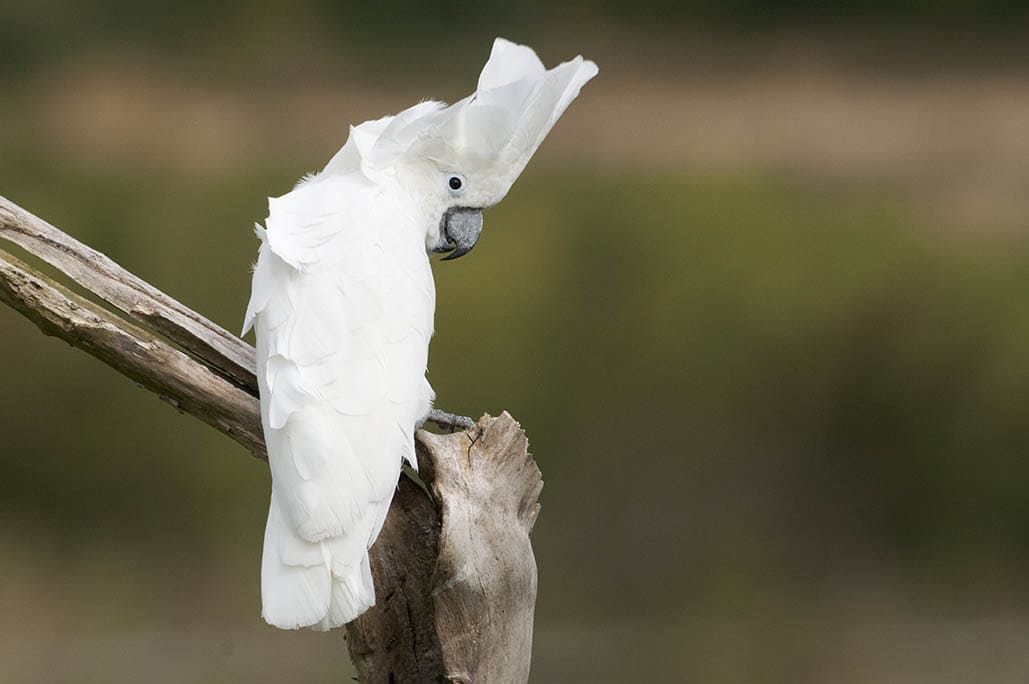
The two Umbrella Cockatoos pictured here are still babies under 3 months old, and still needing to be handfed twice per day!
These birds are extremely friendly and love to be handled. Like most cockatoos Umbrella Cockatoos make very loving pets that need lots of attention. They can learn to talk, as can most cockatoos and are easy to teach all kinds of tricks. Buy a cockatoo only if you can spend a lot of time with it.
To learn more about Cockatoos and their needs visit:
Guide to a Happy, Healthy Cockatoo
- Kingdom: Animalia
- Phylum: Chordata
- Class: Aves
- Order: Psittaciformes
- Family: Cacatuidae
- Genus: Cacatua
- Species: alba
Scientific name:
Description:
Umbrella Cockatoos are a full-sized cockatoo. They are primarily white with long wide crest feathers that resemble an umbrella when raised. The underside of the wings and tail is also frequently tinged with yellow. They have black beaks and dark-grey feet.
Care and feeding:
A roomy cage is required (minimum 2 ft. x 2 ft. x 3 ft. high) unless the bird is to be let out for extended periods. Many birds can spend most of their time on a play pen or parrot perch. They eat a variety of seeds, nuts, fruits, and commercial pellets, as well as the same nutritional foods humans eat.
See About Cockatoos: Housing and About Cockatoos: Care and Feeding for more information.
Distribution:
Is found in Obi, Halmahera, Ternate and Tidore in the central and nothern Moluccas, Indonesia.
Size – Weight:
Mature birds are about cm (12 inches) in length. They are among the largest cockatoos.
Social Behaviors:
In the wild, Cockatoos are friendly and peaceful. They are generally seen in small groups among the treetops.
Breeding/Reproduction:
The hen will usually lay two eggs which will hatch in about 30 days. Both parents will brood and the young will wean in about 3 months.
See About Cockatoos: Breeding for more breeding information.
Sexual differences:
Hard to tell with young birds. As they get older the iris of the females’ eyes will develop a reddish color, the males’ eyes will remain black. This is not always completely accurate so other means are necessary if you need to know “for sure” what sex a particular bird is.
Potential Problems:
Cockatoos can be quite loud screechers. The behaviour can be reduced by giving attention and proper surroundings. Also, since they are prone to chewing, if they are not given enough attention they will chew their own feathers.
Availability:
These birds are available from time to time.
Activities:
Loves to climb and play and chew. Provide lots of toys.
Featured Image Credit: Nigel Dowsett, Shutterstock
